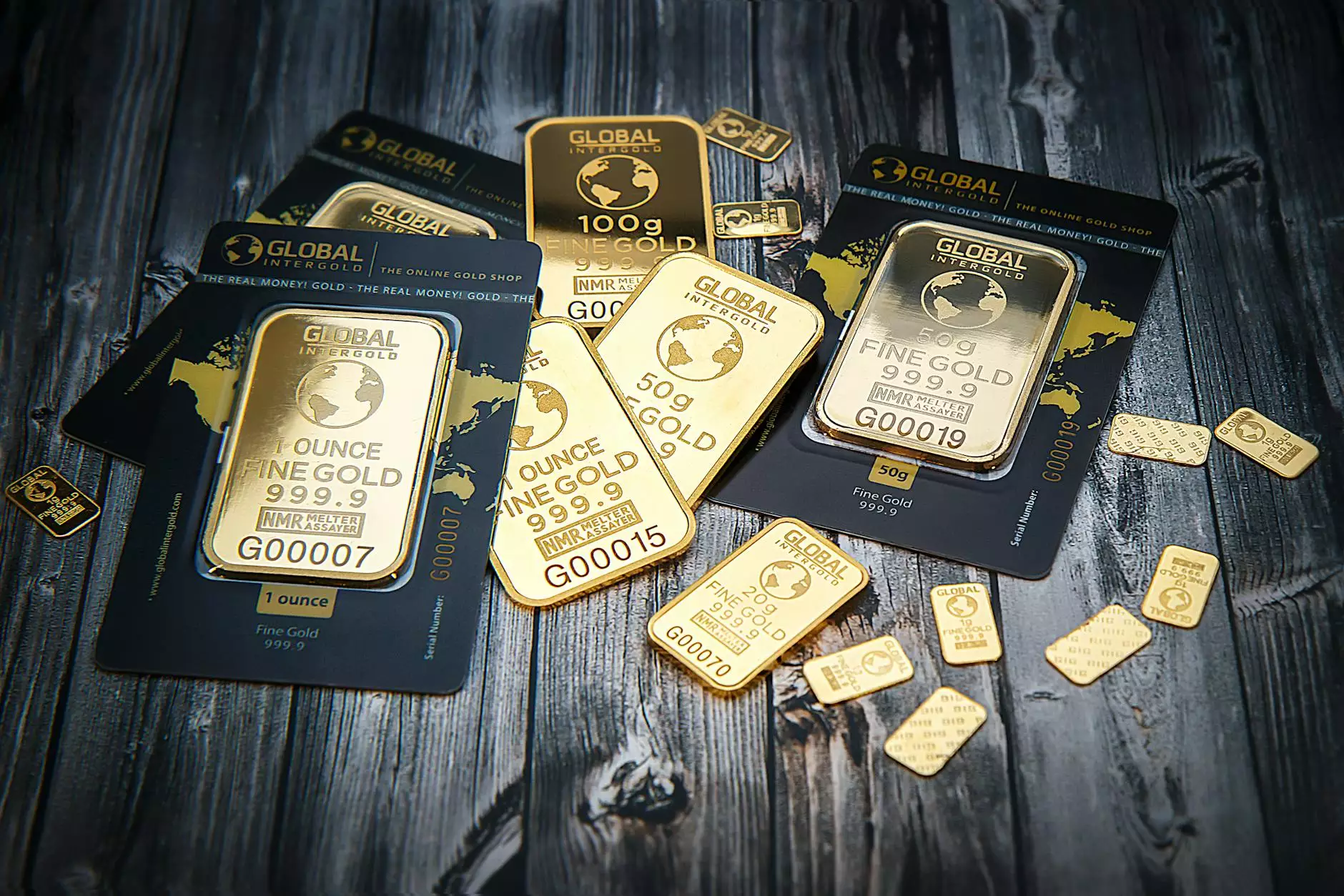The Comprehensive Guide to Gold Coin Prices

The world of precious metals has always attracted the attention of investors and collectors alike. Among these precious metals, gold holds a special place due to its historical significance, inherent value, and financial stability. In this article, we will delve deeply into gold coin prices, exploring the factors that affect them, their significance in the investment world, and the best practices for buying and selling gold coins.
Understanding Gold Coin Prices
Gold coins come in various sizes, weights, and designs, which play a critical role in their pricing. At its core, the price of gold coins is influenced by the global price of gold, which fluctuates based on supply and demand dynamics, geopolitical events, and economic indicators. To comprehend gold coin prices, it’s essential to examine these factors closely.
The Global Gold Market
Gold is traded globally and is considered a hedge against inflation and currency fluctuations. The price of gold, commonly expressed in U.S. dollars per ounce, serves as the benchmark for both bullion and collectible coins. Prices can increase or decrease based on:
- Market Demand: When more people wish to buy gold, the prices rise.
- Economic Stability: During uncertain economic times, gold is often viewed as a safe haven.
- Geopolitical Events: Wars, natural disasters, and political turmoil can all lead to increased buying of gold.
- Inflation Rates: High inflation leads to a decrease in currency purchasing power; thus, investors flock to gold.
Factors Influencing Gold Coin Prices
While the global price of gold is a major determinant of gold coin prices, other variables also play significant roles:
1. Coin Composition
The intrinsic value of a gold coin is determined by its gold content, which is usually measured in troy ounces. Most coins have a purity of .9167 (22K) or .999 (24K). The higher the purity, the more valuable. For example, a one-ounce American Gold Eagle coin typically contains one troy ounce of gold, but the overall price also includes a premium due to its desirability among collectors.
2. Minting and Rarity
Coins produced by recognized mints, such as the U.S. Mint, the Royal Canadian Mint, or the Perth Mint, tend to have higher values. Additionally, rarity, based on minting years or limited editions, significantly affects prices. Coins with limited availability can command premiums far above their gold content value.
3. Coin Condition and Grading
The condition of a gold coin, measured by its grading, influences its market price. Coins graded by recognized services, such as the Professional Coin Grading Service (PCGS) or Numismatic Guaranty Corporation (NGC), will typically achieve higher prices. The grading scale ranges from Good (G) to Perfect Uncirculated (PR-70), with significant value placed on those in pristine condition.
4. Market Trends and Sentiment
Market trends can dramatically shift based on investor sentiment. When interest in gold rises, so do prices. Staying informed through financial news, market analysis, and expert opinions can help customers make educated decisions regarding gold coin prices.
Types of Gold Coins
Gold coins can be categorized broadly into two types: bullion coins and numismatic coins. Understanding these categories can help you identify the best investment opportunities.
1. Bullion Coins
Bullion coins are primarily purchased for their gold content. Their value is closely tied to the current market price of gold. Popular examples include:
- American Gold Eagle
- Canadian Gold Maple Leaf
- South African Krugerrand
- Australian Gold Kangaroo
These coins are typically sold close to their melt value, making them a practical choice for investors focused on gold's price appreciation.
2. Numismatic Coins
Numismatic coins, on the other hand, are valued not just for their gold content but also for their collectibility. Factors such as age, rarity, and historical significance contribute to their value. Examples include:
- $20 Saint-Gaudens Double Eagle
- $10 Indian Head Gold Eagle
- $5 Liberty Head Gold Coin
These coins can fetch prices well beyond their gold content due to collectible value, making them a fascinating choice for enthusiasts.
How to Buy Gold Coins
Investing in gold coins requires careful consideration. Here are some tips to ensure a successful purchase:
1. Research Reputable Dealers
Purchasing gold coins from a reputable dealer is crucial to avoid fraud. Look for dealers with good reviews, proper certifications, and memberships in professional associations such as the Professional Numismatists Guild (PNG) or the American Numismatic Association (ANA).
2. Compare Prices
Before buying gold coins, compare prices from multiple sources. Websites like donsbullion.com offer comprehensive listings and current prices, helping you make an informed decision.
3. Understand the Premiums
When purchasing gold coins, you will encounter premiums, which is the markup over the spot price of gold. Understanding these premiums is essential as they vary by coin type and dealer. Lower premiums are often associated with bullion coins, while numismatic coins may have significantly higher premiums.
4. Verify Authenticity
Always ensure the coins' authenticity before making a purchase. Trusted dealers often provide certificates of authenticity, and reputable coins have specific markings or serial numbers to confirm their legitimacy.
Monitoring Gold Coin Prices
Investing in gold requires continuous monitoring of market prices. Here’s how you can keep tabs on gold coin prices:
1. Use Price Tracking Tools
There are various tools and online platforms available that offer real-time pricing. Websites such as donsbullion.com provide updated prices for different gold coins, making it easier for you to stay informed.
2. Follow Market Trends
Subscribing to financial news websites that cover precious metals can give you insights into market trends. Pay attention to economic reports and forecasts as they can signal potential price movements.
3. Understand Seasonal Trends
Gold prices can be influenced by seasonal trends, especially during the holiday season when demand often rises. Understanding these patterns can help you make better-informed decisions regarding the timing of your purchases.
Conclusion
In conclusion, understanding gold coin prices is vital for anyone looking to invest in precious metals. By considering the factors that influence these prices, including global market conditions, coin type, and economic indicators, investors can make well-informed decisions. Whether you're interested in bullion or numismatic coins, thorough research and vigilance in monitoring the market will facilitate a successful investment journey.
Remember, gold coins offer not only a safe investment but also a tangible asset that can be cherished for generations. If you are considering buying gold coins, be sure to check out donsbullion.com for the latest prices and expert advice.









